At this time of year it’s understandable that most people abandon their gardens until the middle March at the earliest. This is a real pity because the good news is that right now is one of the most exciting times of the gardening year.
The other day I took a walk around to see what was happening. Everywhere I looked, snowdrops were sending up their little spears and in a few weeks the orchard will be a carpet of white.
Snowdrops are my absolute favourite flower. They are such positive little things and don’t give a hoot about the weather. Once planted they will come back year after year and they will double in number every few years.
The early daffodils are also announcing their arrival, although it will take them a bit longer to flower. You can now buy daffodil bulbs to flower from November to late April and probably longer. Just check the labels and with a bit of judicious buying, you will have colour for months on end.
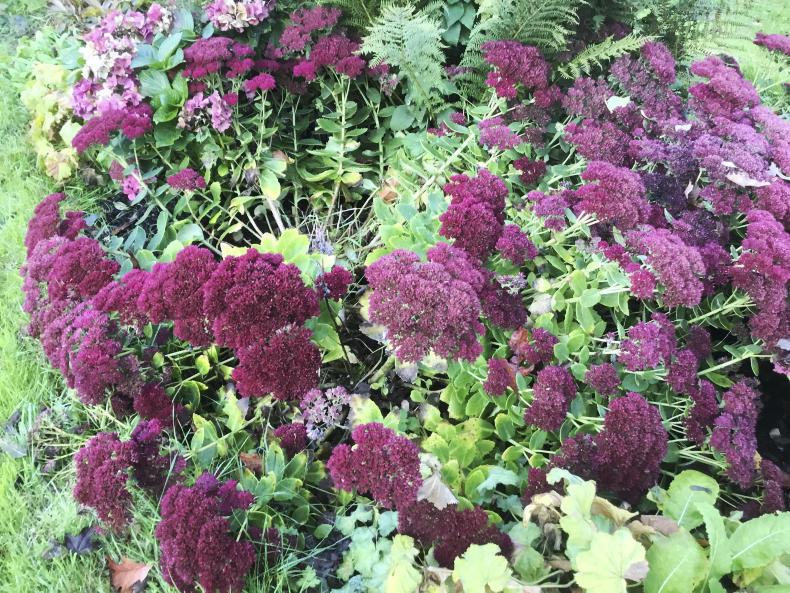
Sedums are easy to care for and give great colour and impact at end of the gardening year.
The rhododendrons are busy producing big fat flower buds and that’s something to look forward to. I have one rhodo that was still in its pot when the sheep got it and only left a stump. Instead of dumping it, I minded it and for the first time in three years it has now produced two flower buds. I couldn’t be more pleased.
It might be December but there’s still colour in the garden. Sedums have changed hue from deep red to purple. These are great stalwarts of the flower border, so easy to propagate and will put up with any weather. The alstroemerias are on what must be their third flush of flowers at this stage. Again these are hardy as old boots.
Schizostylis ‘River Lily’ is a real standout perennial and flowers into December.
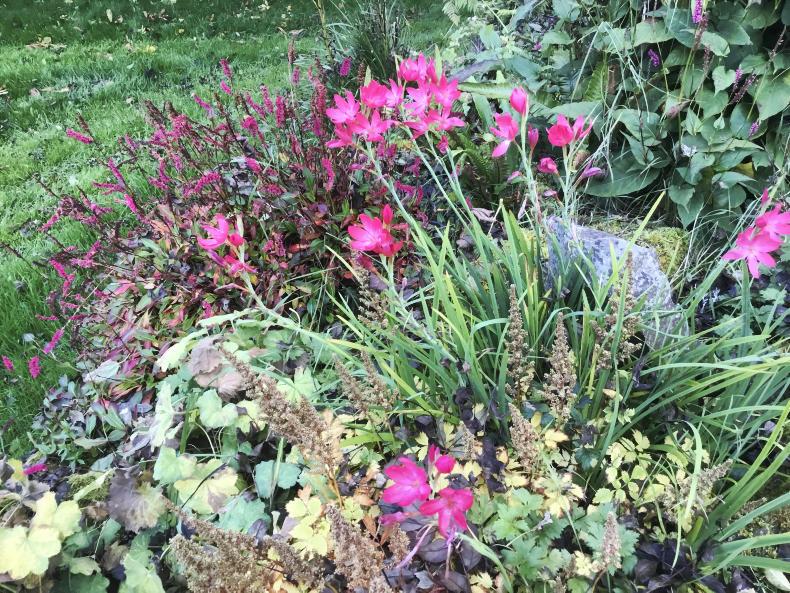
Early colour with schizolysis River Lily.
Melianthus the ‘honey bush’ looks tender and it can be badly damaged by frost. But even if it’s struck down it will return. Its bright green foliage would steal the show in any border and early in the year its flowers are a magnet for bees.
So brave the weather and enjoy your garden and the little robin that will watch everything you do with the utmost of curiosity and reward your work with a song. Throw him a few mealworms by way of thanks.
It’s the time of year where we have to tackle a few tough jobs. In my case this means cleaning up a ditch that’s overgrown with all sorts of rubbish. It’s amazing what a good lobbers and secateurs can do. I want to leave the ivy and ferns and probably plant a few native trees in the cleared area.
Gather Christmas foliage such as holly, ivy, oak and beech leaves, red cornus stems and apples that are past their sell-by day in the orchard. You won’t need decorations if you have lots of festive foliage.
Do not buy holly from anyone who is selling great big branches that would have needed a chain saw to cut down. This is nothing but pure vandalism.
When it comes to gardening, perhaps an explosion of colour isn’t enough without teasing another sense, that of smell. Of the thousands of cultivars of bulbs, there are surprisingly few that have a fragrance.
It could be argued a flower is of no use if it has no fragrance, but equally, certain fragrant flowers polarise opinion with their similarity to cat’s urine.
Hyacinths, Narcissus, Lily, and some varieties of Tulips all emit varying degrees of fragrance within a range from sickly sweet to musky. Narcissus ‘Baby Boomer’ is a dainty little yellow daffodil with a honey sweet scent that really sets it apart, particularly if planted with some blue anemone ‘Mr Fokker’ and tulip ‘Passionale’. Equally, hyacinth ‘Apricot Passion’ with anemone ‘Blanda Blue’ and ‘Blanda White’.
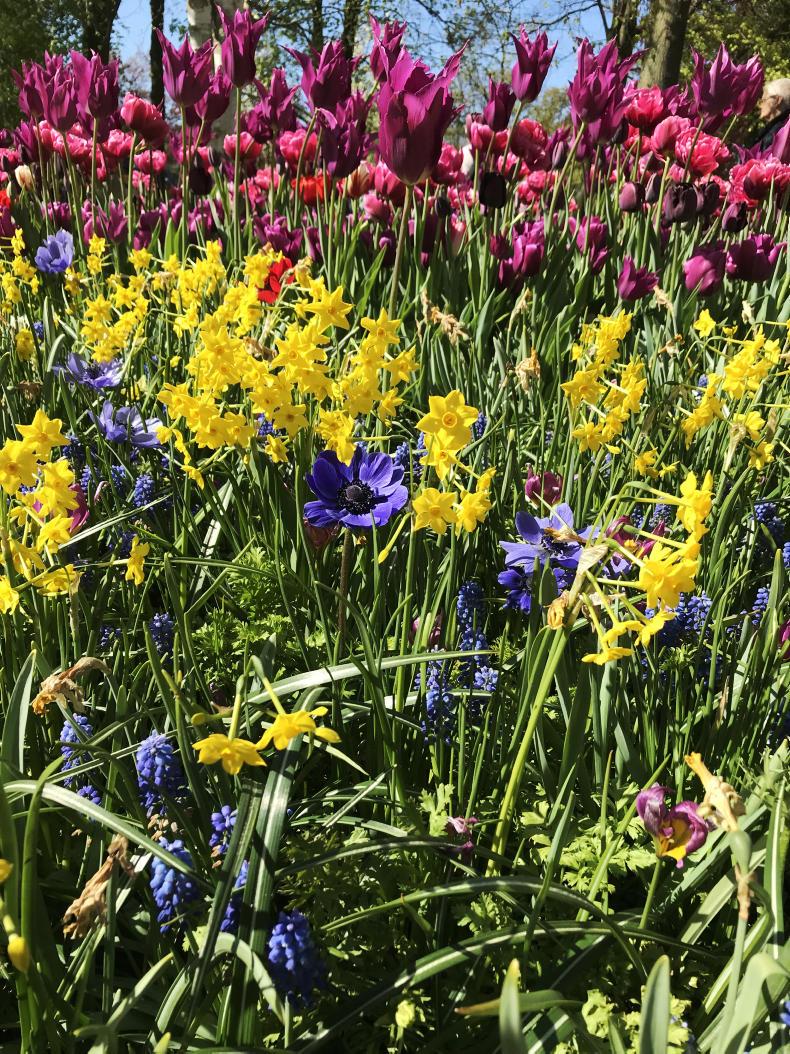
'Baby Boomer'.
A good ratio to work with for small bulbs versus large is about four small for each large. To get a longer flowering season out of your beds and pots, you can layer early, mid and late flowering fragrant varieties. A good early fragrant cultivar is narcissus ‘Canaliculatus’, a tiny flower, easily confused with a daisy from a distance, were it not for the timing. Subtly fragrant, a gentle start.
For the later part of the display, lily flowered ‘Ballerina’ and double late ‘Angelique’ both have a gentle fragrance with a daring display of orange and pink. A layering of these varieties with approximately 12 to 15 bulbs per square foot - or 10 bulbs per layer in a 12 inch pot - will give a dense, fragrant display for the better part of two and a half months.
Thanks to Damien McHugh of Beechill Bulbs, Tullamore Co Offaly. Call 057- 932 2956 or email@bulbs.ie
Irises in their many sizes and colours are a great favourite of mine. Particular beauties include iris Germanica, the Japanese iris and iris Sibirica but really I love them all.
I think they are the sort of plants that are really carefree. All they want are the right conditions and they will happily and reliably flower year after year. They require no maintenance and thrive on neglect.
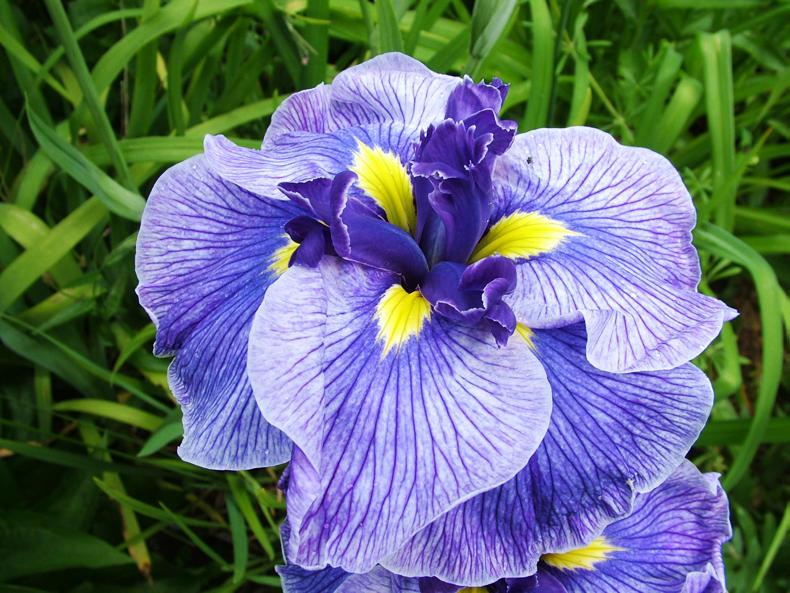
Iris ensata Ruffled Dimity.
Sibirica and the Japanese iris do well in dampish soil so are very suitable for Irish conditions. Germanica prefers dry soil and sits almost on top of the ground as its rhizome (root) needs sun to bake it. They really are very accommodating.
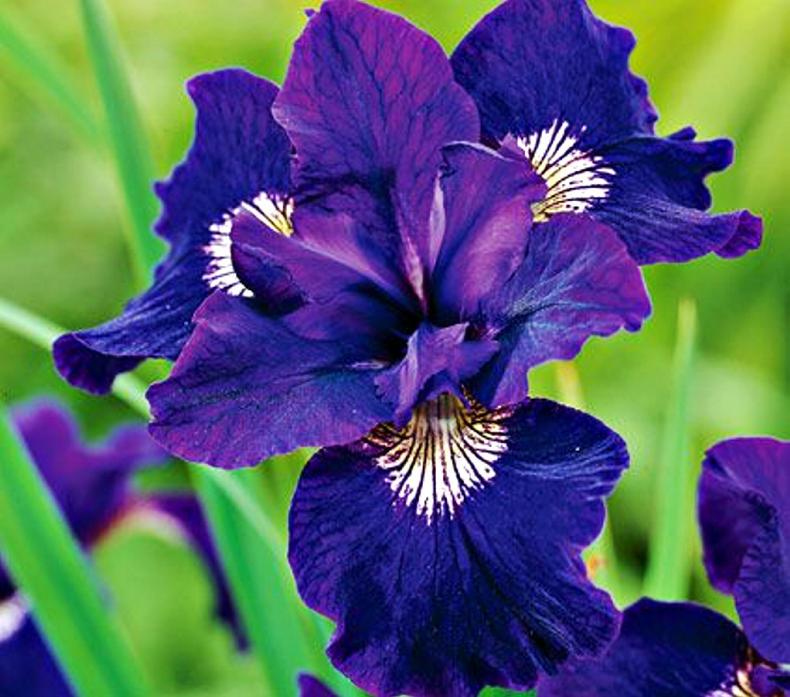
Iris Siberica 'Shirley Pope'.
They are not invasive. In spring you can chop the rhizome into pieces and it will give you three to four new plants that will flower the same year. Irises are carefree, happy and just perfect for most gardens.
Angela Jupe is a retired landscape architect and full time gardener. Her garden at Bellefield Shinrone is open to the public and from 31 January through the first week of February will be open to celebrate the snowdrop and other spring bulbs.
At this time of year it’s understandable that most people abandon their gardens until the middle March at the earliest. This is a real pity because the good news is that right now is one of the most exciting times of the gardening year.
The other day I took a walk around to see what was happening. Everywhere I looked, snowdrops were sending up their little spears and in a few weeks the orchard will be a carpet of white.
Snowdrops are my absolute favourite flower. They are such positive little things and don’t give a hoot about the weather. Once planted they will come back year after year and they will double in number every few years.
The early daffodils are also announcing their arrival, although it will take them a bit longer to flower. You can now buy daffodil bulbs to flower from November to late April and probably longer. Just check the labels and with a bit of judicious buying, you will have colour for months on end.

Sedums are easy to care for and give great colour and impact at end of the gardening year.
The rhododendrons are busy producing big fat flower buds and that’s something to look forward to. I have one rhodo that was still in its pot when the sheep got it and only left a stump. Instead of dumping it, I minded it and for the first time in three years it has now produced two flower buds. I couldn’t be more pleased.
It might be December but there’s still colour in the garden. Sedums have changed hue from deep red to purple. These are great stalwarts of the flower border, so easy to propagate and will put up with any weather. The alstroemerias are on what must be their third flush of flowers at this stage. Again these are hardy as old boots.
Schizostylis ‘River Lily’ is a real standout perennial and flowers into December.

Early colour with schizolysis River Lily.
Melianthus the ‘honey bush’ looks tender and it can be badly damaged by frost. But even if it’s struck down it will return. Its bright green foliage would steal the show in any border and early in the year its flowers are a magnet for bees.
So brave the weather and enjoy your garden and the little robin that will watch everything you do with the utmost of curiosity and reward your work with a song. Throw him a few mealworms by way of thanks.
It’s the time of year where we have to tackle a few tough jobs. In my case this means cleaning up a ditch that’s overgrown with all sorts of rubbish. It’s amazing what a good lobbers and secateurs can do. I want to leave the ivy and ferns and probably plant a few native trees in the cleared area.
Gather Christmas foliage such as holly, ivy, oak and beech leaves, red cornus stems and apples that are past their sell-by day in the orchard. You won’t need decorations if you have lots of festive foliage.
Do not buy holly from anyone who is selling great big branches that would have needed a chain saw to cut down. This is nothing but pure vandalism.
When it comes to gardening, perhaps an explosion of colour isn’t enough without teasing another sense, that of smell. Of the thousands of cultivars of bulbs, there are surprisingly few that have a fragrance.
It could be argued a flower is of no use if it has no fragrance, but equally, certain fragrant flowers polarise opinion with their similarity to cat’s urine.
Hyacinths, Narcissus, Lily, and some varieties of Tulips all emit varying degrees of fragrance within a range from sickly sweet to musky. Narcissus ‘Baby Boomer’ is a dainty little yellow daffodil with a honey sweet scent that really sets it apart, particularly if planted with some blue anemone ‘Mr Fokker’ and tulip ‘Passionale’. Equally, hyacinth ‘Apricot Passion’ with anemone ‘Blanda Blue’ and ‘Blanda White’.

'Baby Boomer'.
A good ratio to work with for small bulbs versus large is about four small for each large. To get a longer flowering season out of your beds and pots, you can layer early, mid and late flowering fragrant varieties. A good early fragrant cultivar is narcissus ‘Canaliculatus’, a tiny flower, easily confused with a daisy from a distance, were it not for the timing. Subtly fragrant, a gentle start.
For the later part of the display, lily flowered ‘Ballerina’ and double late ‘Angelique’ both have a gentle fragrance with a daring display of orange and pink. A layering of these varieties with approximately 12 to 15 bulbs per square foot - or 10 bulbs per layer in a 12 inch pot - will give a dense, fragrant display for the better part of two and a half months.
Thanks to Damien McHugh of Beechill Bulbs, Tullamore Co Offaly. Call 057- 932 2956 or email@bulbs.ie
Irises in their many sizes and colours are a great favourite of mine. Particular beauties include iris Germanica, the Japanese iris and iris Sibirica but really I love them all.
I think they are the sort of plants that are really carefree. All they want are the right conditions and they will happily and reliably flower year after year. They require no maintenance and thrive on neglect.

Iris ensata Ruffled Dimity.
Sibirica and the Japanese iris do well in dampish soil so are very suitable for Irish conditions. Germanica prefers dry soil and sits almost on top of the ground as its rhizome (root) needs sun to bake it. They really are very accommodating.

Iris Siberica 'Shirley Pope'.
They are not invasive. In spring you can chop the rhizome into pieces and it will give you three to four new plants that will flower the same year. Irises are carefree, happy and just perfect for most gardens.
Angela Jupe is a retired landscape architect and full time gardener. Her garden at Bellefield Shinrone is open to the public and from 31 January through the first week of February will be open to celebrate the snowdrop and other spring bulbs.






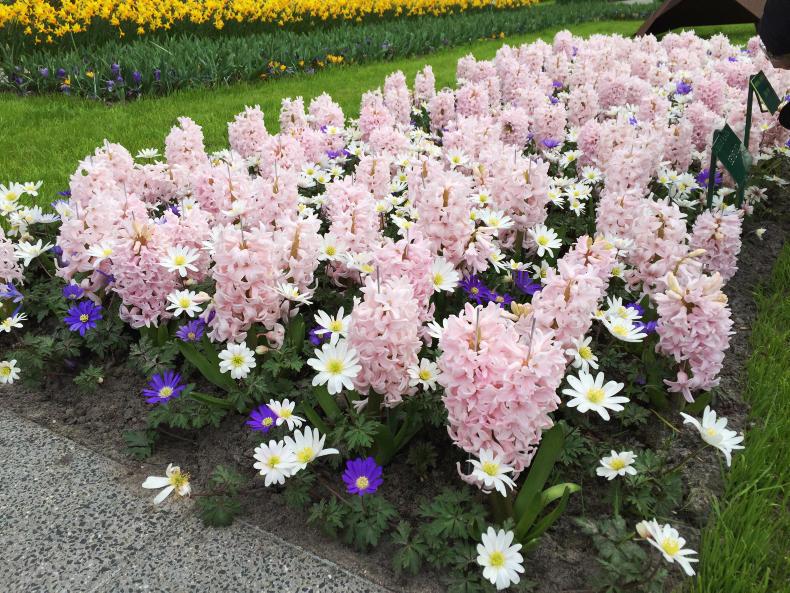




 This is a subscriber-only article
This is a subscriber-only article





SHARING OPTIONS: